Biogeomorphology involves the study of the interactions between organisms and geomorphology. For example, organisms can impact and thus shape landforms on Earth. Biogeomorphology can be seen at Stone Mountain State Park through anthropogenic activity, bioturbation, disaggregation, and pedogenesis.
Human Impacts
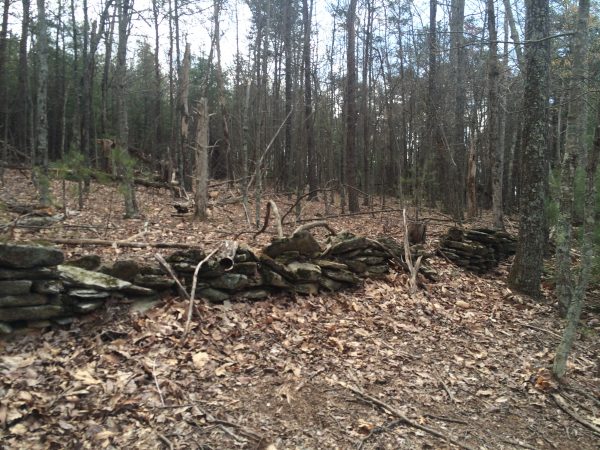 Stone Mountain State Park experienced human activity upon colonization. The park was initially colonized by families of English, German, Irish, French, and Scottish descent. The park was established in 1969 and was made a National Natural Landmark in 1975. Because humans have interacted with Stone Mountain State Park for so long, human activities have changed the way the soil and rock has formed. Settlers built homes, farms, and many necessary components a village needs to thrive. Sediments may have been displaced due to farming activity. Removal of vegetation may have occurred through farming methods such as planting crops or grazing animals. This removal may result in greater erosion of topsoil. Likewise, humans may use large rocks from the landscape for personal use, as shown by the arrangement of rocks in this image. These rocks were not put in this arrangement naturally which causes a difference in the way the landscape would naturally occur.
Stone Mountain State Park experienced human activity upon colonization. The park was initially colonized by families of English, German, Irish, French, and Scottish descent. The park was established in 1969 and was made a National Natural Landmark in 1975. Because humans have interacted with Stone Mountain State Park for so long, human activities have changed the way the soil and rock has formed. Settlers built homes, farms, and many necessary components a village needs to thrive. Sediments may have been displaced due to farming activity. Removal of vegetation may have occurred through farming methods such as planting crops or grazing animals. This removal may result in greater erosion of topsoil. Likewise, humans may use large rocks from the landscape for personal use, as shown by the arrangement of rocks in this image. These rocks were not put in this arrangement naturally which causes a difference in the way the landscape would naturally occur.
Bioturbation
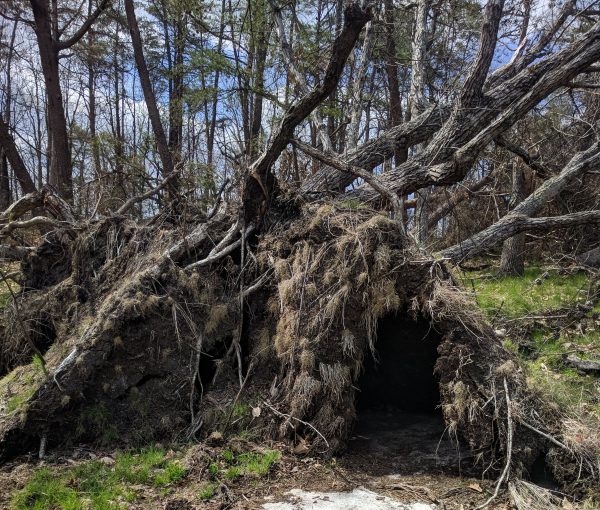 When trees fall, the root systems that were anchoring the tree in the ground is uprooted and the resulting root wad releases sediment that is eventually transported downhill. These trees are typically of an older age due to the fact that the older they are the most stable their root system is, so if a root wad were to occur, the whole root system would be uplifted. On the other hand, the younger trees tend to snap due to their weak, improperly formed structures, which usually ends in them snapping during high wind events. Uprooting results in a small hole approximately 1-2 meters hole where the roots were once previously in the ground.
When trees fall, the root systems that were anchoring the tree in the ground is uprooted and the resulting root wad releases sediment that is eventually transported downhill. These trees are typically of an older age due to the fact that the older they are the most stable their root system is, so if a root wad were to occur, the whole root system would be uplifted. On the other hand, the younger trees tend to snap due to their weak, improperly formed structures, which usually ends in them snapping during high wind events. Uprooting results in a small hole approximately 1-2 meters hole where the roots were once previously in the ground.
Local animals may also impact the landscape. For example, red foxes call Stone Mountain State Park home and their burrowing habits may alter soil structure through compaction.
Disaggregation
- Disaggregation describes the physical erosional effects that occur to break down the structure of various forms of rock outcroppings. During physical weathering, rocks will eventually break down to a point where soils will start to develop which leads to the development of soil in which plants will eventually start to grow. Plants such as moss(of the Bryophyta division) will eventually break down the rocks more as the rocks begin cracking and become more susceptible to physical weathering. Moss is particularly good at breaking down rocks due to the size and amount of its root system. These roots dig in to small cracks in the rock helping the outcrop to break apart. Some rock outcrops are more susceptible to erosional effects than others and the level of susceptibility is due in part to the following rock-outcrop characteristics.
- Cleavage–
- Specific planes within a rock that determines where the most likely location will be for fracture
- Bedding planes–
- Depositional layer between different types of rock that affects the level of weakness the rock experiences in regards to erosion.
- Exfoliation–
- Rocks becoming layered as it erodes, forming thin sheets of rock that break apart easier when put under erosional effects
- Mineral boundaries–
- Boundaries refer to the types of minerals that make up rocks and the boundary that occurs as the minerals come together
- Freeze-Thaw–
- Expansion of water confined in fractures in the rock causes the rocks to crack as the water expands due to freezing
- As rocks continue to crack, soil and other biological debris from various locations begin to build up in the crevices formed in the rock. As this happens, a positive feedback loop occurs and causes more soil to develop over time, thereby causing more biological growth to happen in that vicinity, leading to higher rates of rocks breaking up.
- The more soil build-up means vegetation becomes more abundant, which leads to a much higher erosional rate, including the effects of such things as burrowing animals and root wads.
Pedogenesis
The next step in the process after rocks begin to break apart is called pedogenesis, or soil formation. Parent material is broken apart into smaller pieces by intruding tree and plant roots, as described above. As this happens, more and more plants will take hold in the newly formed mineral soil. These plants in turn release organic acids, which chemically break down rock further, while also dropping organic material, such as pine needles, on top of the soil profile. The organic litter on top comprises the O horizon of the young soil profile. As this litter decomposes through microbiological processes, it thereby adds important organic nutrients that will be available for future plants to the mineral components that were already present.
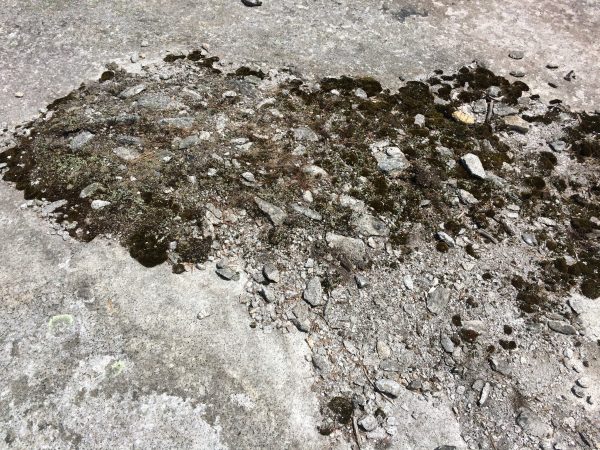
In this picture, you can see the early stages of this process, as moss takes root in small pieces of rock.
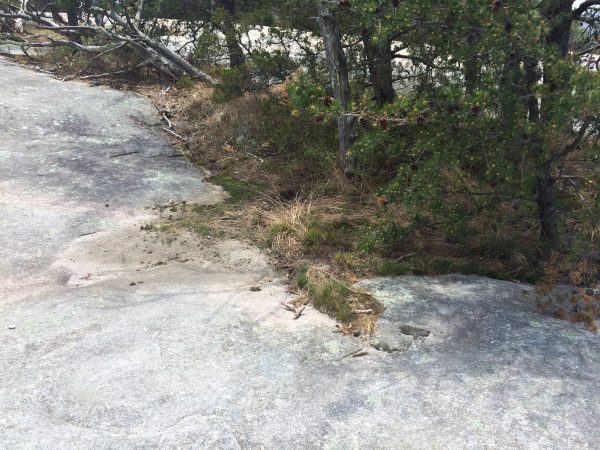
This is a slightly later stage where a large amount of sand is visible and numerous plants are growing. Tree litter in the form of small pieces of wood can also be seen, which will eventually decompose.
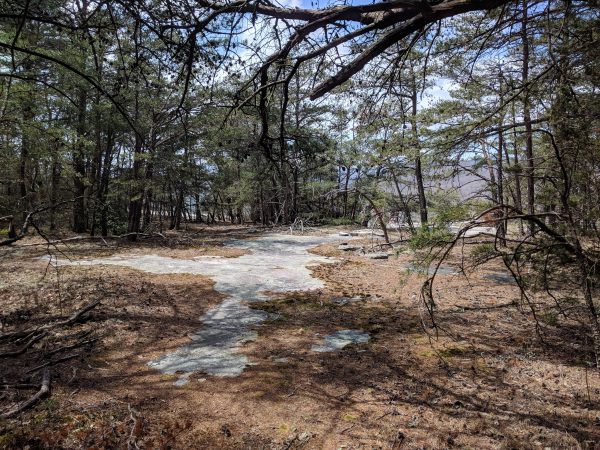
In this picture, soil formation has taken hold over much of the once exposed rock. There is an extensive O horizon of pine needles and wood pieces visible.